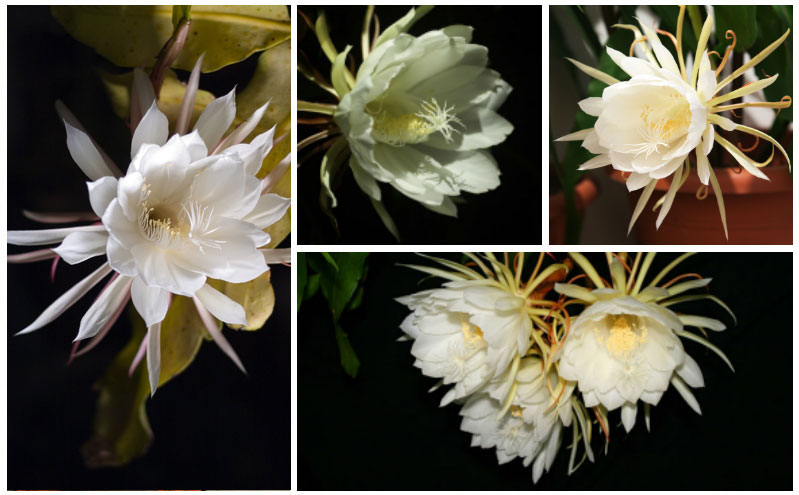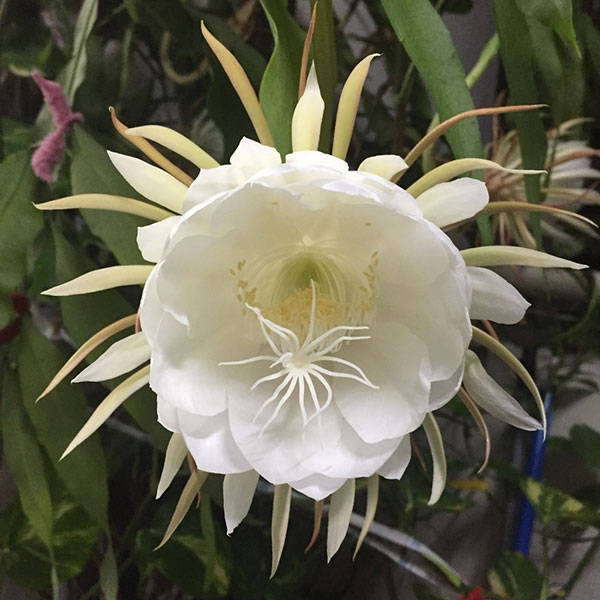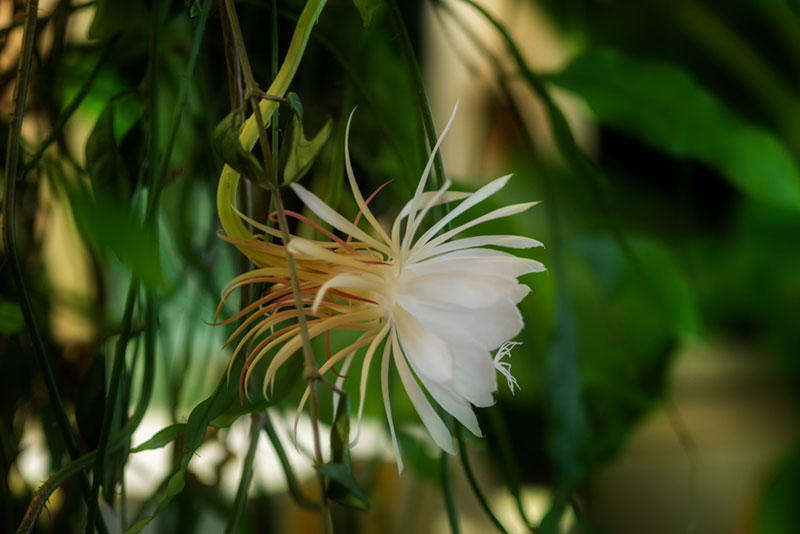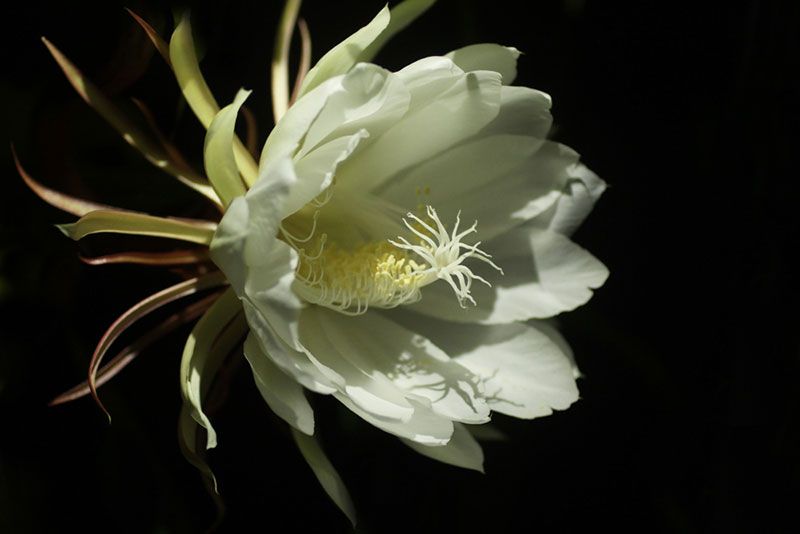
The epiphyllum oxypetalum, which is also called the “Queen of the Night” cactus, is a perennial that can grow to be up to 10 feet tall. It grows in hardiness zones 10 and 11, and it is a succulent plant that uses other plants for support.
These plants are unique because they bloom for one night, and they fill your home with a sweet smell that you will notice right away when you wake up.
In this guide, I have established some tips that will help you grow this plant. It is not difficult to grow, but it may take some time to bloom.
1) Growing
This is a plant that grows quickly in nature. It is a species of jungle cactus that can be found in parts of Mexico, Central America, and South America. It does not have leaves, the foliage that you see from the plant is actually modified stems that will help store water in drier conditions.
2) Light Requirements
This is a plant that is designed to grow in the shadier parts of the jungle, which means that you will not want to give them too much direct sunlight, especially during the hottest part of the afternoon. They do need some sunlight, though, or the flowers will not be able to bloom properly. If you have a location in your home that has excellent indirect sunlight, this is going to be a great location to grow it. It will do best in temperatures that are between 50 and 90 degrees Fahrenheit. Temperatures that are too low should be avoided as well as areas with vents where drafts can be found.

3) Soil Requirements
This is a plant that is going to grow best with well-drained, airy soil. I prefer to mix a bit of perlite with a few handfuls of orchid bark to a slightly acidic mix. It will also grow fairly well in sandy soil, peat moss, and pine bark because these soil types are all great at draining the excess water away from the roots. This plant does not need a lot of space in the pot; in fact, it tends to grow even better when it is root bound.
4) The Long Shoots
When your queen of the night grows, you are going to notice a lot of long shoots coming from the plant. These are long stems that are designed to grab onto the nearby trees so that it can grow with them in the wild. The stems or stolons have small root-like structures that help the plant keep a grip on other plants. This allows the plant to move along the canopies of the trees in search of better light.
5) How to Make the Epiphyllum Oxypetalum Bloom
Getting this plant to bloom can be a bit difficult, but it will also take a bit of patience on your part. The most important thing to consider is whether the plant is getting the proper lighting that it needs. I have had the most luck with a window that is facing south, but any location with a right amount of indirect sunlight will do. Keep the plant in a relatively small planter so that it does not have too much space to expand. The next step that you will need to do to help make your plant bloom is to apply fertilizer to it between January and October. Low nitrogen fertilizer will work best when you are trying to create the most responsive plant.

6) Feeding the Plant
When you feed the plant with fertilizer, you can start with this liquid plant food from Schultz. It will do the job that you need it to do, but I have found that creating my own fertilizer for this plant will really bring out the blooms. I have been using dried banana peels for years, and within the next year, I found that my plant that was not blooming at all, suddenly began having exotic blooms. Since the banana peels contain no nitrogen, they will work well in conjunction with other fertilizer. To create your dried banana peels, you can use a dehydrator or simply bake them in the oven at a low temperature.
7) Watering
This is a succulent plant, so it does not need a lot of water to survive. In general, you should water it once every other week at first, and before you add more water to the pot, make sure that you are checking the soil to see how moist it is. Typically, you should allow the top inch or two of soil dry out before adding more water. Also, the plant should never sit in standing water because the plant will not grow nearly as well.
8) When the Flowers Bloom
As already mentioned in this guide, the flowers of this plant will only bloom at night. They will only be open for a single evening, which is likely to begin around 8 pm or so. The next morning around 6 am the flower will be done blooming, so if you do not check every night to see if there is a bloom ready, it is likely that you will miss it. The flowers typically bloom in the spring and the summer of the year, and when they are fully open, they can be a full nine inches in diameter.

9) Plant Placement
When you first plant your queen of the night cactus, you are going to want to find a location that is relatively shaded for at least part of the day. Ideally, allow it to settle into its new home in the shade. The weather should be more than 55 degrees Fahrenheit when the flower is first planted as well.
10) Propagating the Queen of the Night
Propagating this plant is rather simple. You can use a leaf cutting to start a new plant. It will need to have the tip dipped in a rooting hormone to help it take root, and the portion that is cut should be about four to six inches long. Allow the cutting to dry out for two weeks in a cool, dark place, and then put the plant in soil to begin to grow. Do not give the plant water for a week to 10 days once it is in the soil.
Bonus Tip – Where to Buy
We found a couple of Queen of Night Cactus on Amazon!




